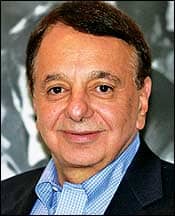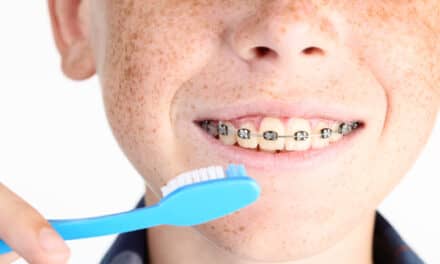by Bryan Keropian, DDS
OP: What is your background in dental sleep medicine?
Keropian: In 1978, after 10 years as a practicing professional, I attended a dental education course focusing on balancing the bite occlusion. That course launched me into a whole new direction in my practice of dentistry. I began focusing on the resolution of head and neck pain, and since then I have taken thousands of hours of education in the area of TMJ/TMD and head and neck pain.
In 1997, I began getting involved in sleep problems. I spoke to several dentists at an [American Academy of Craniofacial Pain] AACP meeting who were using a variety of sleep appliances, and after that I began to treat patients with two different designs, both of which were double-arched. Not being as knowledgeable in this area at the time, I did not obtain pre- and post-treatment sleep studies. So I could only gauge my results on reduction of snoring, which my patients did experience to some degree. However, the patients expressed a real discomfort factor since the appliances were big and bulky, and required placing the mandible in a prognathic relationship. And it still didn’t completely eliminate the snoring. So at that time I decided I no longer wanted to use the appliances that were available.

In 2001 I was introduced to the Pharyngometer, the computer developed by Harvard that uses sonar waves (acoustic reflection) to measure the size of the airway. Once an initial measurement is taken, it can then be taken again with an open vertical and/or with the mandible advanced. Incredibly, I found that there is almost always an increase in the size of the airway with both of those changes. I also realized that the use of the Pharyngometer changed the whole approach to solving sleep problems from simply trying to stop snoring by opening the vertical and advancing the mandible, to letting the computer tell us where to set the bite to get maximum airflow. I was hooked. And from there I began immersing myself in the treatment of dental sleep-disorder breathing.
OP: What inspired you to invent the Full-Breath Solution?
Keropian: I felt that the Pharyngometer offered such a precise and accurate way to measure the airway, it made it so much easier to determine what adjustments should be made to an appliance so patients could get more oxygen while sleeping. And getting more oxygen while sleeping is the root of so many of the dental and total body health problems we see daily. So, through a series of hits and misses, searching for a more comfortable and effective sleep appliance, I came up with the Full-Breath Solution design.
OP: How is the Full-Breath Solution different from other mouthpieces on the market?
Keropian: In terms of design, the Full-Breath Solution is very different from the other sleep appliances. The majority of sleep appliances consist of an upper mouthpiece and a lower mouthpiece that function by opening the bite and moving the jaw forward. And the majority of these double-arched appliances are bulky and uncomfortable devices. My mouthpiece fits only over the upper arch, and the big difference is that at the very back of the device, there is a transpalatal bar. This is an approximately 1/4-inch-wide piece of plastic that runs all the way across the mouth from the left second molar to the right second molar. It sits as a canopy over the tongue, and prevents the tongue from moving up and back and thus blocking the airway. A major change is that the Full-Breath Solution uses minimal mandibular advancement. It only advances the mandible to an end-to-end position. The transpalatal bar restraining the tongue results in a need for less mandibular advancement to be effective. Thus, the Full-Breath Solution provides freedom from a major problem caused by dental sleep appliances—there are no permanent occlusal changes and no TMJ problems.
So while the other mouthpieces are all about advancing the mandible to pull the tongue forward, the Full-Breath Solution directly addresses the core of the problem: the tongue. And, due to its streamlined design, it is much more comfortable to wear. The medical community treats snoring and sleep apnea with the continuous positive airway pressure (CPAP) therapy mask, which has a rejection rate of 50% to 80%.
The material used to make the Full-Breath Solution is a thermoplastic. The plastic softens within 10 seconds when placed in hot water. This results in almost zero adjustments needed when seating the appliance.
The fabrication of the Full-Breath Solution is done by Space Maintainers Laboratory, Chatsworth, Calif.
OP: How many patients have you treated with the Full-Breath Solution?
Keropian: I have treated more than 2,000 patients with it and have been very successful. We have attained a 72% drop in the Apnea Hypopnea Index, which measures the number of times per hour that the tongue blocks the airway for at least 10 seconds. That is huge, since the stoppage of air to the lungs because of tongue blockage during sleep becomes a problem if it happens more than five times an hour, which is mild sleep apnea. A stoppage of more than 20 times per hour is moderate sleep apnea, and more than 40 is severe.
It’s my estimation that 95% of people who come into my office have a mild to severe sleep apnea problem. And sleep apnea causes disruption of others’ sleep from snoring, and has been linked to a variety of health problems such as diabetes, Alzheimer’s, heart disease, fibromyalgia, impotence, and just general-body breakdown.
| To read more on this topic, search for “” in our online archives. |
Most people come to me with one of a handful of problems: snoring, fatigue, fear of falling asleep while driving, sleep apnea, and the inability to use the CPAP. And incredibly, I occasionally get a cancer patient who has sleep apnea, cannot tolerate the CPAP, and tells me they believe their poor sleep is affecting their body’s ability to heal. Now, they can increase their exercise program, go on a special diet, try nutritional supplements, and utilize yoga to relax and center their body. But none of these solutions holds a candle to good-quality sleep, which provides oxygen to the body.
OP: What else should orthodontists know about sleep apnea?
Keropian: I feel that dentistry has been handed a tremendous opportunity. The need for help with problems related to snoring and sleep apnea is huge. And since the CPAP is rejected by such a high percentage of users, that leaves a huge void that can be filled by dentists who provide oral appliances like the Full-Breath Solution. Dentistry has been provided with a golden opportunity to help mankind with its health and vitality.
Bryan Keropian, DDS, is the developer of the Full-Breath Solution, a dental sleep appliance that has earned a patent and has been granted four FDA approvals. Keropian is a member of the Academy of Dental Sleep Medicine and is president of the Alliance of TMD Organizations. He is treasurer of the AACP and is on its Board of Directors. He established the Center for Craniofacial Pain in Tarzana, Calif, in 1978, and then established the Center for Snoring and CPAP Intolerance in 2005. He can be reached at









